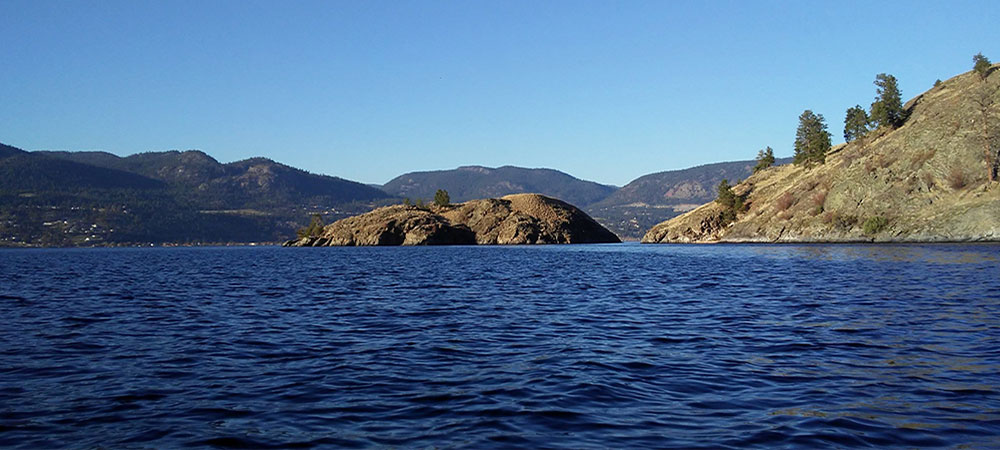What makes Lake Okanagan different than other area lakes? Located at 49 degrees 50 minutes N latitude, 119 degrees 32 minutes w longitude, Lake Okanagan is situated in the interior of southern British Columbia, Canada, about 400 kilometers from the world renown city of Vancouver. It is approximately 60 miles (102 kilometres) long; 3.5 kilometres wide and is 235 metres at its deepest point.
Lake Okanagan has had a fairly unique geological development. Some of the factors influencing its origin include tertiary volcanic and sedimentary activity, fault rupturing, regional tectonic forces, stream dissection and deep erosion. These glaciers and interglacial streams were the main causes behind the deepening of formation of the original valley. Because of this activity, Okanagan Lake has been referred to as a fiord lake, which may have been open to the sea at one time and many of these streams may have been interconnected.

Local legend which has evolved over hundreds of years appears to pinpoint "Ogopogo's lair" as being in a deep cave beneath Squally Point near Rattlesnake Island.
Rattlesnake Island is an uninhabited small rocky island in Lake Okanagan, located directly east of Peachland, British Columbia, Canada. Over the years, there have been many "Ogopogo sightings" in the vicinity of Rattlesnake Island. It is an enjoyable destination for kayakers and canoers to aim for and spend the day, with many hoping to spot the elusive Ogopogo. Although an attempt was made at commercializing the little island in the mid 1970's, development was stopped and the island eventually became part of a local recreational park known as Okanagan Mountain Park.
